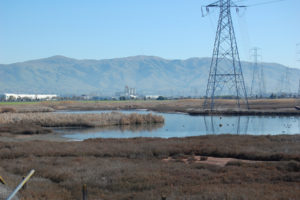A study released last week found that rising sea levels along the West Coast could take a significant economic toll on five California beaches over the next 100 years. One of those beaches is San Francisco’s very own Ocean Beach.
Ocean Beach is a prime Bay Area surfing spot, a popular site for bonfire parties, a common tourist destination, and a vast recreation area for runners, beachcombers, dogs, and dog owners. The beach is also a habitat for wildlife, including various plovers, other birds, and native vegetation. Additionally, beaches offer a lot of economic value that supports surrounding shops, restaurants, and bars with a steady influx of visitors.
However, the new study, funded by the California Department of Boating and Waterways, offers some distressing and eye-opening findings.
At Ocean Beach, flooding and episodic storm events, whose likelihood increases with rising sea level, could result in an estimated $20 million in damages to nearby structures and their contents by the year 2100. And accelerated landward erosion from an estimated 1.4-meter rise in sea-level by 2100 could result in $540 million in damages.
“If you continue to let Ocean Beach erode,” says study coauthor Philip King, an economics professor at San Francisco State University, “you’re going to lose the Great Highway and you’re eventually going to lose residential properties.”
The options for Ocean Beach are limited, but they do exist. King mentions a few of the issues currently under discussion: “For instance, putting a sea wall there, which most people don’t want, adding sand to the beach in places, having managed retreat which lets nature take its course, and there is the issue of what to do about the habitat and possibly restoring native plants.”
Although erosion is ultimately of greater economic concern at Ocean Beach than flooding, addressing the issue involves weighing the benefits against the costs, and not just economic ones.
Armoring the shoreline with seawalls could prevent landward erosion, but doing so means that the ocean will eventually meet the seawalls, and the beach will have disappeared, along with valuable wildlife habitat. Currently, snowy plovers, whose Pacific Coast population is designated as a threatened species, uses the beach for winter roosting. And the southern end of Ocean Beach, at Fort Funston, is home to one of only two colonies of bank swallows remaining in California. Other animals that make use of the habitat at Ocean Beach include killdeer, black-bellied plovers, and sanderlings.
King states that the most important thing that can be done for Ocean Beach is to carry out thoughtful steps to minimize our losses. “Look at the issues and decide as a community what our priorities are. How important is it to preserve habitat in Ocean Beach, to preserve recreation, infrastructure, highways, residences, water treatment plants? Ultimately there are trade-offs and we’re going to have to spend money. One way or another it’s going to cost San Francisco money down the road.”
Download the full study, coauthored by King and colleagues Aaron McGregor and Justin Whittet.

.jpg)



